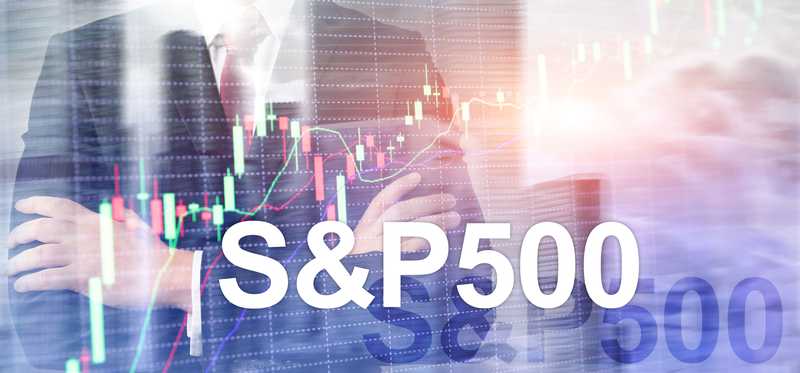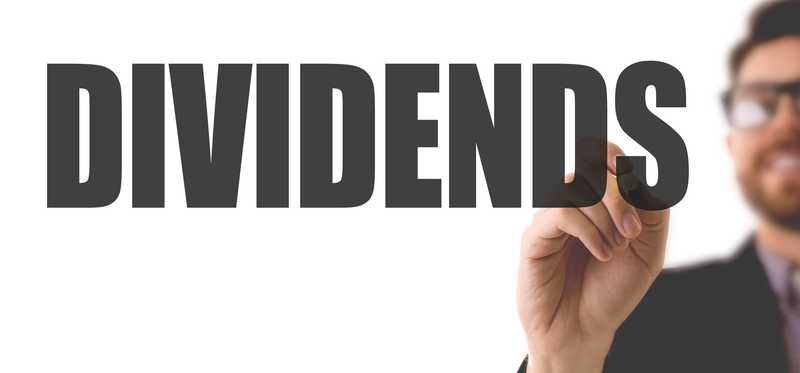10 Index Funds You Should Consider If Picking Stocks Scares You

10 Index Funds You Should Consider If Picking Stocks Scares You
Minimize your risk
Exchange traded funds (ETFs) are pooled investment products that let you avoid picking individual stocks (and bonds). Generally speaking ETFs track indexes, which further removes the need for trying to pick winners and losers. This is great news for investors who find the very notion of selecting individual stocks a little frightening.
That said, ETFs are increasingly structured around esoteric indexes that may actually end up increasing your risks more than you realize. So you need to be careful and ensure that you understand what every ETF you own does... and why. Here are 10 index-based ETFs that not only help you avoid picking stocks, but also help you to minimize the very market risks that may be underpinning your trepidation.
Previous
Next

1. Spreading your money around
If investing is a bit of a concern to you, then you might want to go with as much diversification as possible. An easy way to get that is by selecting a balanced fund. These types of investments buy stocks and bonds, and in the case of iShares Core Growth Allocation (NYSEMKT: AOR), spread your assets globally as well. It does this by owning shares of other ETFs. The expense ratio of 0.25% may be a little high by today's ETF standards, but it is a modest level for investors who want to outsource as many of their investing decisions as possible.
The fund's name is important here in that includes the word "growth." That means that the allocation it uses will be a little aggressive -- but not overly so. To that end, roughly 35% of the portfolio is in U.S. bonds and 5% in foreign bonds, both of which are intended to provide some stability to the portfolio, which roughly follows a 60% stock/40% bond split. That's a rule of thumb breakdown that would be appropriate for most investors. On the stock side, the portfolio has roughly 30% of assets in large cap U.S. stocks, 20% in large foreign stocks, 5% in emerging markets, and roughly 2% or so in small and mid-cap U.S. names. The rest is in cash. Since inception the fund has returned around 8% a year, which is probably about right for a fund like this. You can get a similar alternative in a mutual fund by buying Vanguard Balanced Index Fund (NasdaqMUTFUND: VBINX), but it would only provide exposure to U.S. markets.
Previous
Next

2. Want even less risk?
Not all investors can stomach a growth-oriented approach. So for those that are a little more conservative, iShares Core Moderate Allocation (NYSEMKT: AOM) might be a better selection. This ETF, as its name implies, is for investors with temperaments that fall somewhere between conservative and growth oriented. As a practical matter that shifts the stock bond with to 60% bonds and 40% stocks (reversing the allocation makeup of the previous ETF).
The breakdown of that is roughly 50% domestic bonds, 10% foreign bonds, 20% large cap U.S. stocks, and 15% large foreign stocks. The remaining 5% of the portfolio is split between emerging market stocks and small and mid-cap domestic names. The expense ratio is 0.25%. Since inception the fund has returned around 6% a year, again about what you would expect for this investment approach.
Previous
Next

3. And if you want to avoid as much risk as possible?
If a moderate approach is still too much stress for you, which could easily be true if you are retired, then you might want to step back on risk even more with iShares Core Conservative Allocation (NYSEMKT: AOK). This ETF also has a pretty cute ticker -- A okay... get it? This ETF's goal is basically a mixture of income and preservation of capital. The broad breakdown of the portfolio is 30% stocks and 70% bonds. That is, once again, a rule of thumb allocation that fits the conservative approach well.
The portfolio breakdown is 60% U.S. bonds, 10% foreign bonds, 15% large cap U.S. stocks, and 10% large foreign stocks. The remaining 5% is spread between small and mid-cap U.S. stocks and emerging markets. Like the fund's other siblings it has a 0.25% expense ratio. And its annualized return since inception, at roughly 5%, is pretty much on target with what you would expect for a conservative portfolio like this.
With these three funds behind us it's time to get into some more focused options. Before doing that, however, it's worth noting that there's also an aggressive allocation option here, known as iShares Core Aggressive Allocation (NYSEMKT: AOA). But if picking stocks scares you it might be best to max out at "growth" and leave "aggressive" to more venturesome types.
Previous
Next

4. An old and reliable option
With that collection of "all in one" portfolios out of the way, it's time to move on to some choices for investors who want a little more control over their own portfolios -- though not so much that they want to pick individual stocks. One of the best options here, then, is to buy SPDR S&P 500 ETF (NYSEMKT: SPY). This ETF, as its name implies, tracks the S&P 500 Index. The fund's expense ratio is roughly 0.1% and it has performed, basically, just like the S&P 500 has.
Fun fact, SPDR S&P 500 ETF was the first ETF in the United States. It's the one that got the whole industry started. And the reason why you should consider it is basically the same reason why it was the first ETF. The S&P provides broadly diversified exposure to roughly 500 of the largest companies in the United States. The list isn't just made up of big names, however, it is a curated list to ensure the companies contained in the index are representative of the broader U.S. economy. In other words, with one ETF you are picking up a good proxy for U.S. stocks overall. Note that it is weighted by market cap, so the largest positions will generally be the largest companies in the index. That's not a bad thing, but it does mean that the index is swayed by some names more than others.
Previous
Next

5. Getting exposure to EVERYTHING!
While the S&P 500 Index is a great starting point, note that it is focused on larger companies. What about all of those small and mid-cap names out there? You'll miss those if you buy SPDR S&P 500 ETF. Which is why, if you want the broadest exposure possible, you might want to look at Vanguard Total Stock Market ETF (NYSEMKT: VTI). The expense ratio here is a miniscule 0.03% and it has performed in line with expectations.
The name pretty much says it all here. This ETF's goal is to track the entire stock market, from large caps to small caps and everything in-between. It is market cap weighted, so larger stocks tend to have more influence, but it doesn't ignore the smaller names out there by excluding them.
That said, it is just a market cap weighted list of companies that pass certain inclusion criteria (like ease of trading the shares). It is not trying to provide a representative sample of the broader U.S. economy, like anything locked onto the S&P 500 Index would be. Since smaller stocks make up a smaller part of the overall market, capitalization wise, there will also be material overlap between the largest names in the SPDR S&P 500 ETF and the Vanguard Total Stock Market ETF. Still, since Vanguard Total Stock Market ETF provides the broadest possible exposure to U.S. stocks, it really is the ultimate pick for investors who don't want to pick stocks at all.
Previous
Next

6. Building your own balancing act
At this point it's time to hit reverse just a little bit. For investors who don't want to pick stocks, picking bonds would probably be even more of a problem -- The bond market is larger and even more complicated than the stock market. And since mixing stocks and bonds is the best way to diversify your portfolio, you'll probably want a bond fund in the mix to help offset some of the risks of owning stocks. To that end, Vanguard Total Bond Market ETF (Nasdaq: BND) is a great choice. The ETF's expense ratio is 0.035% and like most index funds, it has tracked closely to its index.
As the name implies Vanguard Total Bond Market ETF owns the "entire" bond market... but that's not quite the whole story. What it actually does is provide exposure to the entire U.S. investment grade bond market. Left out are higher risk areas like junk bonds (or high yield bonds for the more polite among us) and foreign bonds. You can get ETFs that track those two areas, but the added risk is probably more than you'd like if you are leery of picking individual stocks. So the play-it-safe bet here is to just go with Vanguard Total Bond Market ETF and stick to financially-strong companies.
Pairing this ETF with a stock-based option, meanwhile, will allow you to select the asset allocation that's right for you. And, equally important, adjust it over time as your life situation changes.
Previous
Next

7. A port in a storm
So far we've looked at ways to avoid picking individual stocks and bonds, assuming that your fear about doing so is general. But your stock picking anxiety could also be driven by the fact that the market is hovering at a high point and you think the next move could be down. If that's the case, you might be fearful of stocks in general and buying a broad index fund like SPDR S&P 500 ETF won't help you get over that concern. But owning a safe-haven investment like SPDR Gold Shares (NYSEMKT: GLD) might.
SPDR Gold Shares is a little different from other ETFs because it owns physical gold. Gold is a hard asset that investors often flock to when markets are falling, which is why it's known as a safe haven. The downside is that there's no growth opportunity in owning physical gold since an ounce of gold will always and only ever be an ounce of gold. That said, when times are tough on Wall Street, owning gold can help minimize the impact of market volatility. SPDR Gold Shares has an expense ratio of 0.40% and its price does a decent job of tracking the price of gold over time.
Previous
Next

8. Income backed by hard assets
If owning an asset like gold with little growth potential doesn't sound like a great option, which is not unreasonable, then you should look at Vanguard Real Estate ETF (NYSEMKT: VNQ). Like gold, real estate is a hard asset. However, there is growth potential here because Vanguard Real Estate ETF owns a broad and diversified collection of companies, like real estate investment trusts (REITs), that are operating businesses which own real estate. So they can expand the size of their business over time through construction and acquisition activity.
Vanguard Real Estate ETF has an expense ratio of 0.12% and tracks its target benchmark closely. However, there's one additional feature that some investors might find appealing -- dividends.
REITs are specifically designed to pass income on to shareholders. And ETFs are pass-through entities, with income flowing through to shareholders. So Vanguard Real Estate ETF not only provides exposure to a hard asset seen as a safe haven, but also the income that those assets generate. The trailing 12-month yield is roughly 4%, about twice what you'd get from an S&P 500 Index fund today. That said, the dividends that Vanguard Real Estate ETF pays are obviously dependant on the dividends it gets from its portfolio, so the payment will vary from month to month. But if you are looking for a safe haven in a storm, the mixture of hard assets and income that Vanguard Real Estate ETF provides (without the need to pick individual stocks), could be just what the doctor ordered.
Previous
Next

9. Everyone loves power
There's another safe-haven option that doesn't involve hard assets, and that's utilities. In this case the safe-haven status is driven by the fact that utilities provide a core life necessity (energy) largely via government granted monopolies. When times get tough, people still want electricity and natural gas. Meanwhile, the long-term growth plans that utilities create are meant to appease the regulators who control the prices regulated utilities can charge customers. The completion of these growth plans isn't normally dependent on stock markets heading steadily higher. Good market or bad market, system upgrades and expansions to meet increasing demand need to get done.
One of the best options in the utility space is Vanguard Utility ETF (NYSEMKT: VP)U. It has an expense ratio of 0.10% and tracks a broad basket of utility stocks. That said, like REITs, utilities usually pay dividends. Vanguard Utility ETF's trailing 12-month yield is roughly 3%. The monthly payment will, as you'd expect, change depending on the dividends the ETF receives. But if you like the idea of exposure to companies that sell something customers want in good times and bad, then Vanguard Utility ETF should be on your wish list.
Previous
Next

10. And now for something completely different
What if you really do just hate the idea of stocks. In that case you could buy SPDR Gold ETF or go a bit out on a limb and buy a somewhat esoteric ETF like Reality Shares DIVS ETF (NYSEMKT: DIVY). From the name it might sound like this ETF owns dividend-paying stocks, but that's not the case. It owns a collection of bonds, derivatives, and cash that, ideally, allow it to capture the dividend growth of stocks separate from the ups and downs of stock prices.
It's not an easy concept to wrap your head around, but think of it as pegging your returns to the rate of dividend growth over time. Since inception the fund has returned an annualized 5%, well below the broader market (there's no real benchmark here, since what Reality Shares DIVS does is pretty unique). And investors have paid a steep 0.85% for that return. But here's the important piece, it has achieved that return with a standard deviation of just 5 over the trailing three years compared to roughly 11 for the SPDR S&P 500 ETF. Reality Shares DIVS ETF's volatility is closer to that of a bond fund than a stock fund, largely because dividends don't actually change much from year to year. Dividends do, however, have a bias toward steadily increasing over time. Which is the big selling point -- slow and steady returns.
This is not a fund for everyone. You need to get comfortable with a fairly complicated investing approach and goal. But, if you don't want to pick stocks, Reality Shares DIVS ETF lets you avoid stocks altogether by tracking dividends instead.
Reuben Gregg Brewer has no position in any of the stocks mentioned. The Motley Fool has no position in any of the stocks mentioned. The Motley Fool has a disclosure policy.
Previous
Next
Invest Smarter with The Motley Fool
Join Over Half a Million Premium Members Receiving…
- New Stock Picks Each Month
- Detailed Analysis of Companies
- Model Portfolios
- Live Streaming During Market Hours
- And Much More
READ MORE
HOW THE MOTLEY FOOL CAN HELP YOU
-
Premium Investing Guidance
Market beating stocks from our award-winning service
-
The Daily Upside Newsletter
Investment news and high-quality insights delivered straight to your inbox
-
Get Started Investing
You can do it. Successful investing in just a few steps
-
Win at Retirement
Secrets and strategies for the post-work life you want.
-
Find a Broker
Find the right brokerage account for you.
-
Listen to our Podcasts
Hear our experts take on stocks, the market, and how to invest.
Premium Investing Services
Invest better with The Motley Fool. Get stock recommendations, portfolio guidance, and more from The Motley Fool's premium services.